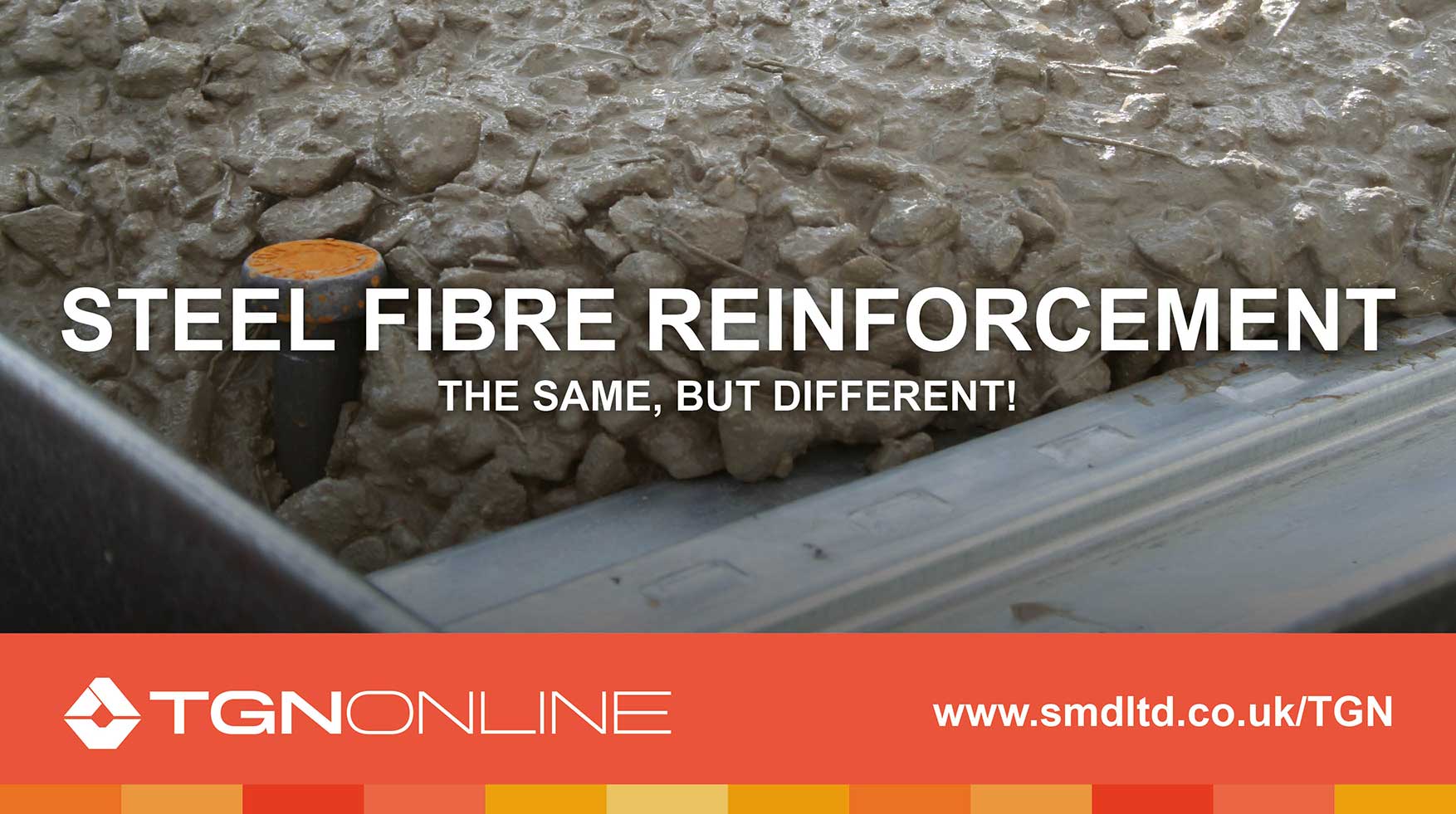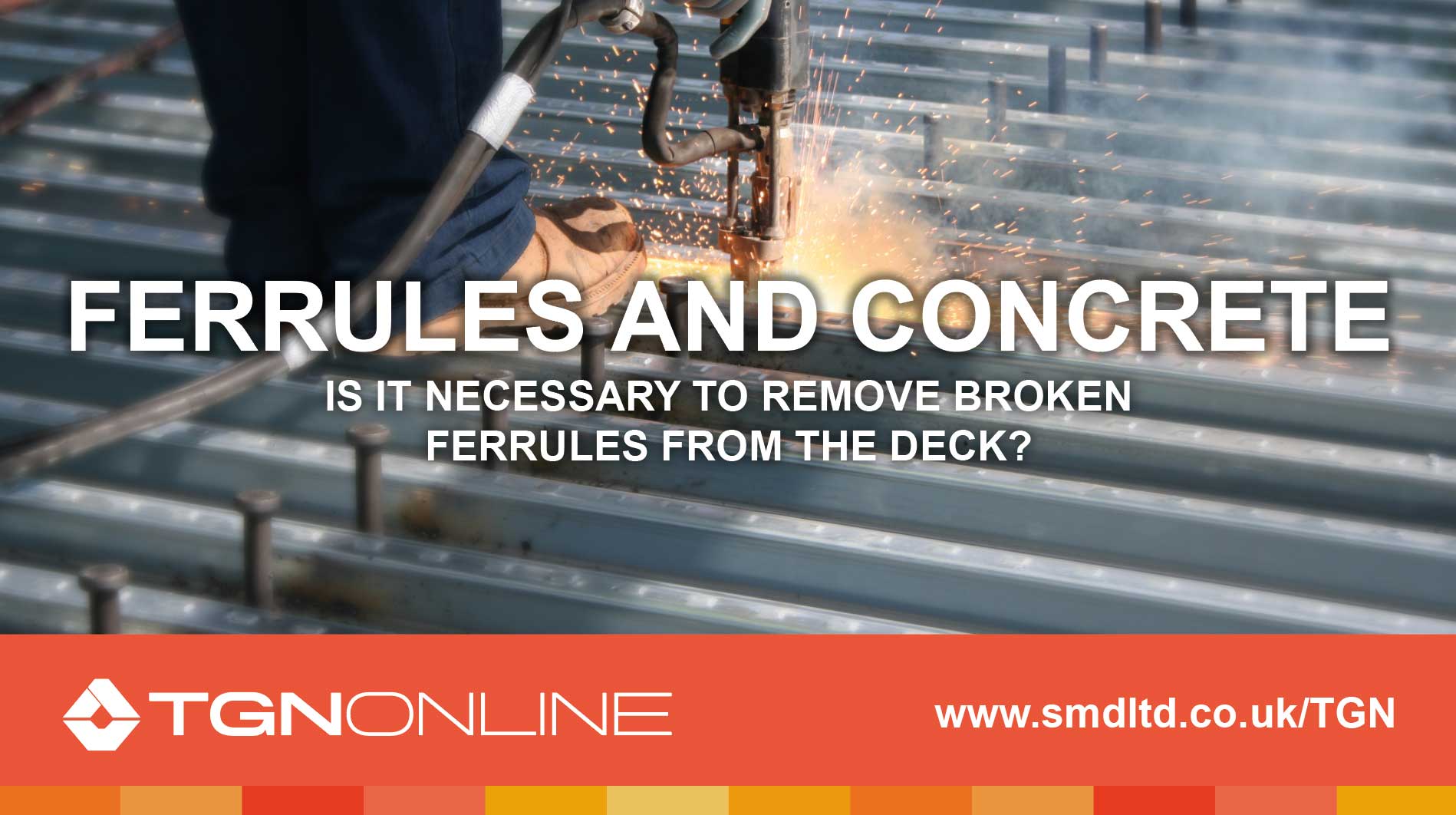
Fibre reinforced concrete composite slab with metal decking
The use of fibre reinforced concrete continues to evolve and grow in the construction industry. It is now commonly adopted across a wide variety of applications where fibres can offer structural performance as an alternative to traditional mesh and rebar.
This has been driven by the wide range of benefits the use of fibre reinforced concrete provides. By eliminating the need for traditional steel mesh there are considerable time savings to the program, labour and material cost savings, and logistical and storage benefits on site. Importantly, there are also significant health and safety benefits to consider as the risks associated with the hoisting, handling and cutting of mesh are removed.
Fibre supplier options
Composite slab construction using metal decking, is one such application that benefits from the use of fibre reinforced concrete. SMD have a number of product and supplier options that have been tested with their products, with the recent addition of Fibre Concrete Solutions Ltd (FCS) Apex 60 steel fibres now available as an alternative steel fibre concrete solution.
Understanding the correct dosage
Available on our recently updated SMD Elements design software, each product option can easily be selected offering fire ratings up to and including 120 minutes. All design properties relating to the fibre option have been verified by FCS working in conjunction with the Steel Construction Institute (SCI).
SMD Elements considers the loads, span of deck and fire rating to enable the user to determine the appropriate solution. The slab thickness and dosage of fibres can then be evaluated to ensure the optimum solution.
Carbon impact
In addition to providing the necessary moment capacity, crack control and fire rating, there are also environmental benefits. The adoption of steel fibres reduces the embodied energy and CO2 associated with the construction of composite slabs using traditional reinforcement in the concrete. Using figures in the University of Bath ICE report, published in 2008, reductions in EE and CO2 can be in the order of 20 to 50%, depending on the deck profile and designated steel mesh replaced.
The EE / CO2 impact is further reduced when transportation is considered, as potential vehicle movements are reduced as reinforcement and other ancillary products are not required to be delivered to site.
Once the composite metal deck profile and fibre reinforcement has been determined using the SMD Elements design software, it is easy to source each type of steel fibre products when it is time to pour the concrete slab.
FCS Fibre availability and placement
FCS Apex 60 is stocked widely at ready mix concrete plants. This is because the fibre is adopted for other common applications such as Beam and Block floor construction for residential housing, meaning that the fibre is not just specifically used on composite metal decks. Through direct contact with Fibre Concrete Solutions, or your chosen ready-mixed concrete supplier, the delivery of the fibre reinforced concrete to your site can be discussed, so your needs are understood and fulfilled.
Typically, the fibre reinforced concrete will require pumping, so a suitable mix design will be proposed meeting the project requirements. Fibres can also be used in self compacting concrete (SCC) mixes which may be considered for further practical benefits or to reduce noise disturbance by eliminating the need to power float.
ADDITIONAL NOTE – Where SCC is proposed, it can be more difficult to achieve a slab poured to constant thickness. It is therefore important to either limit deflection during design or consider the additional concrete from ponding as a result of deflections of the steel frame, to ensure the deck design has sufficient unpropped spanning capacity.
Commercially, an all-inclusive price for fibres and concrete will be given by the ready-mixed concrete supplier, providing the contractor with the convenience of having the supply of concrete and fibres from one single source. This removes the need to order mesh or bar reinforcement from other sources, which must then be delivered, unloaded, stored, re-lifted, hoisted and fixed into place.
How are fibres added to the concrete mix?
On the day of the concrete pour, fibres are added to the concrete at the batching plant via conveyor belt to the ready-mixed truck. This ensures the fibres are added gradually and evenly to the mix. After the correct fibre dosage for the truck capacity has been added, the concrete is mixed for a further five minutes to allow for the even distribution of the fibres throughout the concrete. As the use of fibres is now commonplace, the addition and mixing procedures are well understood and practiced.
The steel fibre reinforced concrete is then delivered to site and pumped straight onto the composite metal deck. The concrete installers can place the concrete without the potential tripping hazard of walking on the mesh. Engineers, Contractors and Clients are safe in the knowledge that the reinforcement is guaranteed to be correctly positioned in the concrete slab as mesh is not trampled down or moved out of position. The concrete can then be finished with an easy float, power float or indeed a dapple bar if using a self-compacting concrete.
Efficient building
SMD recognises the need to ensure our solutions are safer, faster, yet more cost effective for our discerning customers within the construction industry. Therefore, having steel fibres available to be used in conjunction with our shallow floor deck profiles R51+, TR60+ and TR80+, for your next project is well worth investigating.
For more information regrading concrete placement, click here




